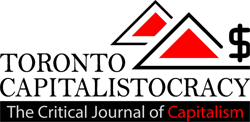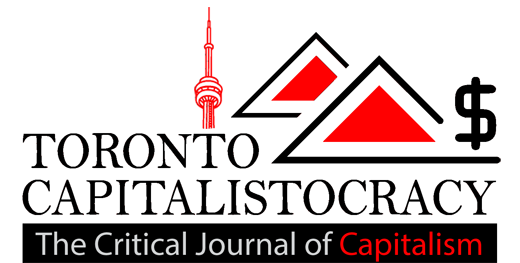Headline News
No, the Coronavirus Will Not Change the Global Order

How will the coronavirus pandemic reshape geopolitics? Many
commentators predict the end of an era of globalization that has
prospered under U.S. leadership since 1945. Some see a turning point at
which China surpasses the United States as a global power. Certainly,
there will be changes, but one should be wary of assuming that big
causes have big effects.
For example, the 1918-1919 flu pandemic killed more people than World
War I, yet the lasting global changes that unfolded over the next two
decades were a consequence of the war, not the disease.
Globalization—or interdependence across continents—is the result of changes in transportation and communication technology, and these are unlikely to cease. Some aspects of economic globalization such as trade will be curtailed but financial flows less so. And while economic globalization is influenced by the laws of governments, other aspects of globalization such as pandemics and climate change are determined more by the laws of biology and physics. Walls, weapons, and tariffs do not stop their transnational effects, though deep and persistent economic stagnation would slow them down.
This century has seen three crises in two decades. The 9/11 terrorist attacks did not kill very many people—but like jujitsu, terrorism is a game in which a smaller player can use the shock of horror to create a disproportionate impact on the opponent’s agenda. U.S. foreign policy was profoundly distorted by choices made in a state of panic that led to long wars in Afghanistan and Iraq. The second shock, the 2008 financial crisis, brought on the Great Recession, gave rise to populism in Western democracies, and strengthened autocratic movements in many countries. China’s fast, massive, and successful stimulus package contrasted with the West’s lagged response, leading many to predict that China was on course to become the world’s economic leader.
Initial responses to the century’s third crisis, the coronavirus pandemic, also went down the wrong path. Both Chinese President Xi Jinping and U.S. President Donald Trump started off with denial and misinformation. Delays and obfuscation wasted crucial time for testing and containment, and the opportunity for international cooperation was squandered. Instead, after imposing costly lockdowns, the world’s two largest economies engaged in propaganda battles. China has blamed the U.S. military for the presence of the virus in Wuhan, and Trump has spoken about the “Chinese virus.” The European Union, with an economy roughly the size of the United States’, dithered in the face of disunity. Yet a virus could not care less about borders or about the nationality of its victims.
The incompetence of its response has hurt the United States’ reputational (or soft) power. China has provided aid, manipulated statistics for political reasons, and engaged in vigorous propaganda—all in an attempt to turn the narrative of its early failure into one of a benign response to the pandemic. However, much of Beijing’s effort to restore its soft power has been treated with skepticism in Europe and elsewhere. That is because soft power rests on attraction. The best propaganda is not propaganda.
Sign up for Foreign Policy’s latest pop-up newsletter, While You Weren’t Looking, for a weekly update on the world beyond the coronavirus pandemic. Delivered Friday.Sign Up
By signing up, I agree to the Privacy Policy and Terms of Use and to occasionally receive special offers from Foreign Policy.
In soft power, China starts from a weak position. Despite major efforts since former President Hu Jintao announced the objective of increasing the country’s soft power at the 17th National Congress in 2007, Beijing has created its own obstacles by exacerbating territorial disputes with neighboring countries and by its insistence on repressive party control, which prevents the full talents of society from being unleashed in the way that happens in democracies. It is not surprising that global public opinion polls and rankings such as the Soft Power 30 rank China low in soft power.It is not surprising that global public opinion polls and rankings such as the Soft Power 30 show China weak in soft power. The top 20 spots in the index are held by democracies.
In hard power, too, the balance favoring the United States will not be changed by the pandemic. Both the U.S. and Chinese economies have been hit hard, as have those of the United States’ European and East Asian allies. Before the crisis, China’s economy had grown to two-thirds the size of the United States’ (measured at exchange rates), but China entered the crisis with a slowing growth rate and declining exports. Beijing has also been investing heavily in military power, but remains far behind the United States and may slow down its military investments in a more adverse budgetary climate. Among other things that the crisis has exposed is China’s need for major expenditures on its inadequate health care system.
Moreover, the United States has geopolitical advantages that will persist despite the pandemic. The first is geography: It is bordered by oceans and friendly neighbors, while China has territorial disputes with Brunei, India, Indonesia, Japan, Malaysia, the Philippines, Taiwan, and Vietnam. A second advantage is energy: The shale oil and gas revolution has transformed the United States from an energy importer to a net exporter. China, on the other hand, is highly dependent on energy imports passing through the Persian Gulf and the Indian Ocean, where the United States has naval supremacy. The United States also has a demographic advantages: Over the next decade and a half, according to research by Stanford University’s Adele Hayutin, the U.S. workforce is likely to grow by 5 percent, while China’s will shrink by 9 percent, mainly a result of its former one-child policy. China’s working-age population peaked in 2015, and India will soon pass China as the world’s most populous nation. And it barely needs repeating that U.S. power also results from its place at the forefront of the development of key technologies including biotechnology, nanotechnology, and information technology. U.S. and other Western research universities dominate higher education.

Headline News
How Canadian churches are helping their communities cope with the wildfires

As wildfires burn across Canada, churches are finding ways to support their members and the broader community directly impacted by the crisis.
According to the Canadian Interagency Forest Fire Centre, as of June 13, there are 462 active fires across Canada – and 236 of them classified as out of control fires.
Whether it’s through phone calls or donations to community members, here’s how a few churches across Canada are handling active wildfires and the aftermath in their regions.
Westwood Hills, N.S.: St. Nicholas Anglican Church
In Nova Scotia, St. Nicholas Anglican Church and other churches in the area are collecting money for grocery cards to give to families impacted by the Tantallon wildfire.
Right outside of Halifax, N.S., the Tantallon wildfire destroyed 151 homes. More than 16,000 people evacuated the area due to the fire.
The fire is now considered contained, but Tanya Moxley, the treasurer at St. Nicholas is organizing efforts to get grocery gift cards into the hands of impacted families.
As of June 12, four churches in the area – St. Nicholas, Parish of French Village, St Margaret of Scotland and St John the Evangelist – raised nearly $3,500. The money will be split for families’ groceries between five schools in the area impacted by the wildfire.
Moxley said she felt driven to raise this money after she heard the principal of her child’s school was using his own money to buy groceries for impacted families in their area.
“[For] most of those people who were evacuated, the power was off in their subdivision for three, four or five days,” she said. “Even though they went home and their house was still standing, the power was off and they lost all their groceries.”
Moxley said many people in the area are still “reeling” from the fires. She said the church has an important role to help community members during this time.
“We’re called to feed the hungry and clothe the naked and house the homeless and all that stuff, right? So this is it. This is like where the rubber hits the road.”

Headline News
Is it ever OK to steal from a grocery store?

Mythologized in the legend of Robin Hood and lyricized in Les Misérables, it’s a debate as old as time: is it ever permissible to steal food? And if so, under what conditions? Now, amid Canada’s affordability crisis, the dilemma has extended beyond theatrical debate and into grocery stores.
Although the idea that theft is wrong is both a legally enshrined and socially accepted norm, the price of groceries can also feel criminally high to some — industry data shows that grocery stores can lose between $2,000 and $5,000 a week on average from theft. According to Statistics Canada, most grocery item price increases surged by double digits between 2021 and 2022. To no one’s surprise, grocery store theft is reportedly on the rise as a result. And if recent coverage of the issue rings true, some Canadians don’t feel bad about shoplifting. But should they?
Kieran Oberman, an associate professor of philosophy at the London School of Economics and Political Science in the United Kingdom, coined the term “re-distributive theft” in his 2012 paper “Is Theft Wrong?” In simplest terms, redistributive theft is based on the idea that people with too little could ethically take from those who have too much.
“Everybody, when they think about it, accepts that theft is sometimes permissible if you make the case extreme enough,” Oberman tells me over Zoom. “The question is, when exactly is it permissible?”
Almost no one, Oberman argues, believes the current distribution of wealth across the world is just. We have an inkling that theft is bad, but that inequality is too. As more and more Canadians feel the pinch of inflation, grocery store heirs accumulate riches — Loblaw chair and president Galen Weston, for instance, received a 55 percent boost in compensation in 2022, taking in around $8.4 million for the year. Should someone struggling with rising prices feel guilty when they, say, “forget” to scan a bundle of zucchini?

Headline News
The homeless refugee crisis in Toronto illustrates Canada’s broken promises

UPDATE 07/18/2023: A coalition of groups arranged a bus to relocate refugees to temporarily stay at a North York church on Monday evening, according to CBC, CP24 and Toronto Star reports.
Canadians live in a time of threadbare morality. Nowhere is this more obvious than in Toronto’s entertainment district, where partygoers delight in spending disposable income while skirting refugees sleeping on sidewalks. The growing pile of luggage at the downtown corner of Peter and Richmond streets resembles the lost baggage section at Pearson airport but is the broken-hearted terminus at the centre of a cruel city.
At the crux of a refugee funding war between the municipal and federal governments are those who have fled persecution for the promise of Canada’s protection. Until June 1, asylum seekers used to arrive at the airport and be sent to Toronto’s Streets to Homes Referral Assessment Centre at 129 Peter St. in search of shelter beds. Now, Toronto’s overcrowded shelter system is closed to these newcomers, so they sleep on the street.
New mayor Olivia Chow pushed the federal government Wednesday for at least $160 million to cope with the surge of refugees in the shelter system. She rightly highlights that refugees are a federal responsibility. In response, the department of Immigration, Refugees, and Citizenship Canada points to hundreds of millions in dollars already allocated to cities across Canada through the Interim Housing Assistance Program, while Ontario says it has given nearly $100 million to organizations that support refugees. But these efforts are simply not enough to deliver on Canada’s benevolent promise to the world’s most vulnerable.
The lack of federal generosity and finger-pointing by the city has orchestrated a moral crisis. It’s reminiscent of the crisis south of the border, where Texas governor Greg Abbott keeps bussing migrants to cities located in northern Democratic states. Without the necessary resources, information, and sometimes the language skills needed to navigate the bureaucratic mazes, those who fled turbulent homelands for Canada have become political pawns.
But Torontonians haven’t always been this callous.
In Ireland Park, at Lake Ontario’s edge, five statues of gaunt and grateful refugees gaze at their new home: Toronto circa 1847. These statues honour a time when Toronto, with a population of only 20,000 people, welcomed 38,500 famine-stricken migrants from Ireland. It paralleled the “Come From Away” event of 9/11 in Gander, N.L., where the population doubled overnight, and the people discovered there was indeed more than enough for all. It was a time when the city lived up to its moniker as “Toronto, The Good.”
Now, as a wealthy city of three million people, the city’s residents are tasked with supporting far fewer newcomers. Can we not recognize the absurdity in claiming scarcity?




